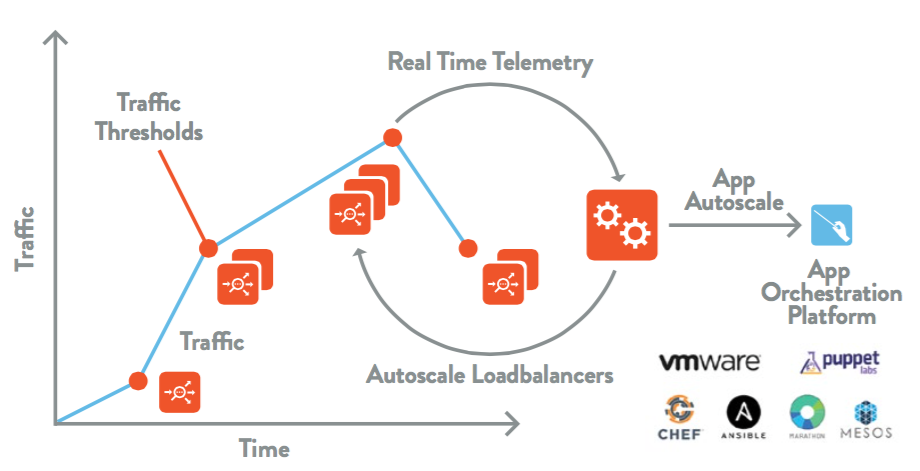In today’s business environment, enterprises need their load balancers to be elastic and provide network and app teams with the ability to get their job done faster. Applications have to be responsive to users, even when there is a sudden traffic spike. Users are used to an "always-on" experience and apps need to respond to these expectations. Web-scale companies such as Google and Facebook have relied on the combination of industry-standard data center hardware with powerful software that enables them to be agile, flexible, and elastic.
Traditional appliance-based load balancers cannot deliver on the promise of true elasticity because the only way you can "scale" an appliance is by purchasing more appliances. This doesn't scale as fast and quickly becomes cost-prohibitive.
While open source solutions allow developers and app owners to get started quickly, they lack enterprise-class security and scalability features. So what is the solution?
Elastic Load Balancing
The load balancer is a critical component of your data center or cloud and needs to able to to scale in order to support the needs of your business.
For example, imagine any of the following scenarios:
- Your company is an online retailer; Black Friday and Cyber Monday are upon you. You have a successful promo and online traffic to your website suddenly far exceeds your expectations.
- Your business hosts important revenue-generating applications and you are being hit by a DDoS attack.
- You are a service provider looking to rollout a new patch or a feature to all your customers at a specific time. You expect that the load during this period will be 10x the normal load.
So, what do you do when traffic to your application increases beyond what you have provisioned on the largest load balancing appliance in your infrastructure? How do you increase your load balancing capacity further?
Elastic load balancing allows enterprises to handle abnormal traffic patterns without adversely affecting user experience. In fact, in a recent test we conducted, we found that it is possible to scale from 0 to 1 million SSL transactions per second with elastic load balancing.
Why Can't I Do This With a Traditional Load Balancer?
Traditional hardware load balancers or their virtual counterparts are subject to architectural limitations that prevent them from being elastic, flexible, and agile. They are appliance-based with data and management planes fused into the same appliance - which means admins need to configure, deploy, and manage each appliance separately. This disparate management complicates multi-cloud deployment. The appliance footprint is also unfit for modern application architectures that demand rapid app deployment, elastic scaling of load balancing or application resources, and faster troubleshooting of network incidents.
Avi’s software-defined architecture, on the other hand, separates data plane from control plane. The data plane is distributed across cloud environments - load balancers can be deployed in any environment to remain closest to applications. These distributed load balancers are your SSL termination points and hence these collect real-time telemetry about apps. The control plane is centralized; it’s “off-path” location also enables it with the ability to collect the telemetry from load balancers, analyze it with the machine learning algorithms, and publish visual dashboards for admins.
Elastic Load Balancing from Avi Networks
For today’s enterprise, applications have to be responsive to users, even when there is a spike in the number of users. Without this type of elasticity, we cannot handle abnormal traffic patterns without adversely affecting user experience.
The Avi Vantage platform is built on software-defined principles that separate the data plane and control plane to deploy load balancers (Avi Service Engines) across multiple clouds closest to the applications and a central controller (Avi Controller). This architectural innovation enables Avi Vantage elastically scale up or scale down to match traffic patterns and ensure that even if one of the load balancers fails, that loss can be absorbed gracefully.



